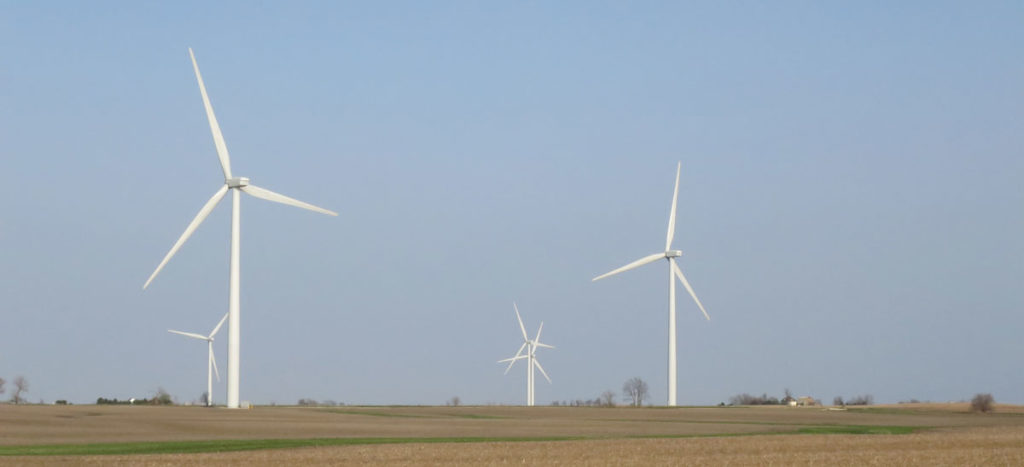Over the past month, tens of thousands of bats have migrated back to their summer ranges in Illinois. As spring temperatures increase and insect prey emerges, habitat in Illinois becomes more favorable for bats. At least six species of Illinois bats are known to migrate. Because cave-roosting bats have ready access to cave hibernacula, the majority of migratory bats are tree-roosting species. Autumn migration to hibernacula and winter roosts occurs from August to October, and bats return to the northern portions of their range in the spring. Beyond these similarities, migratory bats experience a wide range of migratory distances and strategies.

Illinois has over 2,200 wind turbines. On larger turbines, blade tips can spin at over 186 mi/hr (300 km/hr). Photo SJ Taylor, 13 April 2017.
Many species travel enormous distances. The hoary bat (Lasiurus cinereus) can travel over 1,200 miles (2,000 km) from Illinois to southern California and northern Mexico. In contrast, evening bats (Nycticeius humeralis) only migrate a few hundred miles each year. The size of migratory colonies also ranges greatly between species. Hoary bats are primarily solitary outside of mating, while gray bats (Myotis grisescens) congregate during the winter, in groups which may exceed half a million individuals.
Besides shelter from winter conditions, migration plays an important role in mating. Migratory species mate during their fall migration, but delay fertilization until the following spring. Some species, including eastern red bats (Lasiurus borealis), engage in lekking behavior where a male establishes and defends a territory at the top of the largest tree in the area, mating with females that approach this conspicuous landmark.
Unfortunately, there can be significant bat mortality during migration. Wind turbines are a major cause of mortality in bats, causing over 600,000 bat deaths in 2012. Deaths due to turbines peak shortly before and during the fall migration. Mortality from wind turbines affects bat species differently. Of more than forty species of bats in North America, the majority of wind turbine mortality occurs in eastern red, hoary, and silver-haired bats- all migratory species. Developing strategies to reduce wind turbine mortality is an important step in ensuring bats continue to migrate in Illinois.

